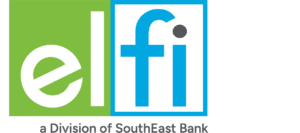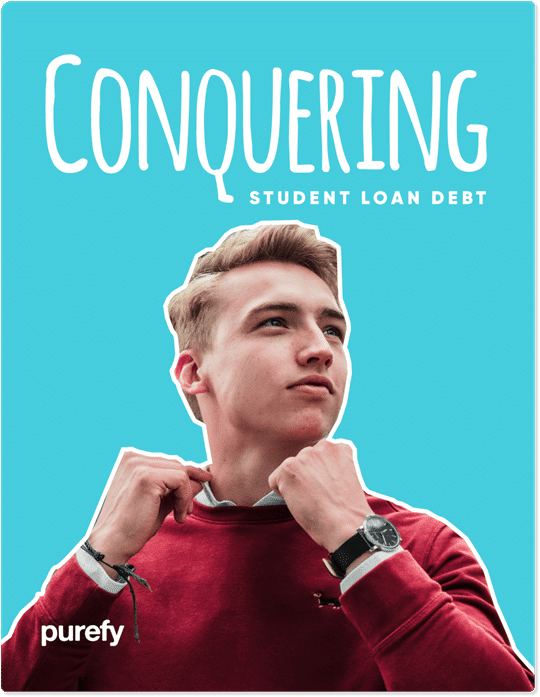Are you looking to lower your current interest rate, change your monthly payment, or pay off your debt more quickly? Like a lot of people, you may be unsure if refinancing is a possibility with your federal student loans, but we’ve got answers.
What is student loan refinancing, anyway?
Once a tool used primarily in the mortgage industry as a way to take equity out of your home, refinancing became popular in the student loan market about 10 years ago.
By refinancing, you are basically taking your existing student loan or loans and shopping around for a new lender that will refinance your debt to more favorable terms. There is no residual equity built into student loans, so saving money on interest is the primary motivator.
Today, ultra-low interest rates are the major draw for student loan borrowers with some of the lowest rates in history.
Beyond scoring a better interest rate and the associated cost savings, you can also restructure loans when refinancing to change terms or benefit from new programs or offers.
So, what about refinancing federal student loans with a private loan?
Is refinancing federal student loans even possible?
You bet it is — as long as it’s with a private lender!
The federal government and the U.S. Department of Education are not in the refinance business and don’t participate in the process. They do offer federal student loan consolidation, but that option won’t save you any money or lower your interest rate.
However, private lenders – like banks, credit unions, or other financial institutions – are eager to do business with you. With the right financial profile, you could be a perfect candidate for a student loan refinance for your federal student loans, private student loans, or a combination of both.
The question may come down to whether you want to refinance depending on your use of certain benefits attached to federal student loans (more about that later).
The 2 Best Companies to Refinance Student Loans
Our Top-Rated Picks for 2024 Offer Low Rates and No Fees

How student loan refinancing works for federal loans
Basically, when you refinance your federal student loans, a private lender is paying off your loans and creating a new loan for you with a lower interest rate and better overall terms.
You start by reviewing quotes from different companies to find the optimal deal and if you meet or exceed their credit worthiness standards, they will underwrite a new loan for you.
Make sure your financial outlook is healthy
Anytime you embark on a financial journey, you will need these three things, so make sure they are in order before moving forward.
- You want the best credit score and credit report possible — this is one of the triads for securing a new loan with the best rates. Lenders want to do business with people who have borrowed money and paid it back according to the terms they agreed to. Your credit report shows that in detail and from your results the three credit agencies determine your credit score.
Plan on checking all three reports annually, because each of the credit agencies can have different information that leads to a different score. By law you are able to ‘pull’ all three of your credit reports once a year for free.
- You need adequate income whether you receive a paycheck or are self-employed. And you will also need a way to show documentation, like paystubs, W-2s, or your most recent tax returns.
- You want a debt-to-income ratio, or DTI, that shows you know how to manage your finances in a responsible way. Most lenders want to see a DTI of 38% or better.
To arrive at your DTI, you want to add all your fixed monthly expenses together (e.g., mortgage or rent, car payment, credit card minimum payments, student loans) and divide that number by your gross income.
Once you have a handle on the three pillars of your financial picture, you are ready to start the refinance process.
What’s the difference between a private student loan and federal loan?
When in school, most people exhaust all of their scholarships, grants, gifts, and help from their parents before turning to student loans. Usually, people then take out federal loans first because they are easy to get and don’t require a lengthy credit history to qualify.
Common types of federal student loans include:
- Direct subsidized loans
- Direct unsubsidized loans
- Direct PLUS and Parent PLUS loans
- Direct consolidation loans
These loans are administered by the U.S. Department of Education and have an extensive list of repayment and deferment options for people that qualify.
Private loans, on the other hand, are student loans that are from banks, credit unions, and other financial entities.
They require passing a credit check (or having a cosigner) and adequate income. Unlike federal loans, they are not based on financial need, but do typically have higher lending limits and more choices of repayment terms.
Private lenders offer student loans, as well as refinanced student loans. When refinancing through a private lender you can also consolidate federal and private loans at a lower interest rate to save money.
Benefits you can gain by refinancing federal student loans
When you refinance your student loans, you stand to gain several benefits that add up to saving money and designing a payment plan that fits your needs.
With federal student loans, you can consolidate your loan through your existing federal loan servicer, but it will be at an interest rate that is averaged from your existing federal loans. There is no money save that way.
When you use a private lender to refinance your federal and private student loans, you have these benefits to choose from:
Save money with lower interest rates
The good news is that interest rates are at all-time historic lows, so there has rarely been a better time to revisit your loans.
By refinancing, you will have a choice of either fixed or variable interest rates for your new loan. Lenders are offering fixed rates starting at 2.4-2.5% and variable rates at 1.8%.
That means that if your current loans are averaging 6 or 7 %, you could save on your monthly payments, plus spend much less over the life of the loan.
To illustrate, if you currently have $40,000 in student loan debt and are paying 6.8% for 10 years, you will be paying $460.32 per month. By the end of your loan, you will have paid $15,238.56 in interest.
If you refinance that same $40,000 loan to 2.7% interest for 10 years, then you will have a new monthly payment of $380.73 and will pay only $5,687.42 in total interest.
Now that’s quite a deal!
See How Much You Can Save
View Details
Collapse
Step 3: See How Much You Can Save
$15,310
Lifetime Interest
Savings
$1,018
New Monthly
Payment
$128
Monthly
Savings
| Current Loan | New Loan | Savings | |
|---|---|---|---|
| Rate | 6.7% | 4.2% | 2.5% |
| Lifetime Interest | $37,520 | $22,210 | $15,310 |
| Monthly Payment | $1,146 | $1,018 | $128 |
Like what you see? Check your actual prequalified rates from the industry’s top lenders in just 2 minutes or less.
No fees to refinance
There are no fees to refinance. Most private lenders don’t charge application fees or origination fees like are common in the mortgage refinance industry. So, there is no out-of-pocket expense to refinance your student loans.
Even better, most lenders don’t have pre-penalty payments either. That means that you can pay off your loan early or refinance again at no charge.
Reduce your monthly payment amount
If you still want to reduce your monthly payment amount even more than you get with reduced interest rates, then consider extending your loan terms.
Private lenders have terms for 15, 20, and even 25 years (instead of the standard 10 years offered by the federal government).
With extended loan terms, your loan amount will be spread over many more months which will bring down the monthly amount significantly. Just remember, that you may pay more in interest with the longer loan term (although with today’s low rates, that may not even be much).
Pay off your loans faster
On the other hand, you can also speed up your payments to pay your loan off more quickly.
Many private lenders offer accelerated loan terms of 5 and 7 years. While your monthly payment will go up, you will be able to pay off your loan much more quickly and use that money for something else.
Consolidate, consolidate, consolidate!
Nobody likes the headache of paying multiple loans, each with different amounts and different due dates, each month.
By consolidating all of your student loans, both federal and private, into one loan, you gain the ease of paying just one time per month. And when you sign up for autopay, it’s even easier. Plus, many private lenders give you a 1% discount for being an autopay customer.
Adding/removing a cosigner
Maybe you’ve recently graduated or have scored that great new job with the big salary. It’s time to take the responsibility for paying your loans without benefit of a cosigner.
By refinancing, you can qualify for a loan on your own giving that cosigner the ability to stop worrying about your debt and redirecting their buying power somewhere else.
Or, on the flip side, if you are trying to build credit, refinancing using a cosigner would let you make the payments and work towards better credit.
Some private refinance lenders have a ‘cosign release’ program where you can apply to have your cosigner released from responsibility once you have made 12 – 24 months of payments. It’s the best of both worlds — you can get the loan with the cosigner’s help and then, once you’ve proven yourself, release that person and assume the debt in total.
Get a new loan service provider
Sometimes it’s as simple as wanting a new service provider. Maybe your current loan servicer has bad customer service, or they are hard to get a hold of — whatever the reason, by refinancing your federal student loans, you can start fresh with a brand new lender.
What you may lose by refinancing federal student loans
Right about now, refinancing probably sounds surprisingly good. But, before you get much further, consider what you lose when you refinance your federal student loans.
Your current federal student loans are backed by the Department of Education and the federal government so they can offer programs that private lenders simply can’t. Consider these drawbacks before moving forward.
You lose access to income-driven repayment plans
Once you refinance, you are not going to be eligible for any of the income-driven repayment plans (IDR). These plans, if you qualify, base your monthly payments on a percent of your discretionary income.
They also extend your terms out to either 20 or 25 years — after your end date any remaining balance can be written off.
There are five different IDR-type plans:
- Income-Based Repayment – you’ll have payments of 10% of discretionary income for 20 years. If you took out your loans before 7/1/14, those numbers change to 15% for 25 years.
- Income-Contingent Repayment – your payments would be 20% of discretionary income for 12 years on consolidated federal loans (Parent PLUS loans are only eligible for this option).
- Income-Sensitive Repayment – only for borrowers of Federal Family Education Loans (FFEL) which was ended in 2010.
- Pay As You Earn (PAYE) and Revised Pay As You Earn (RPAYE) are both similar to IDR but have different requirements for eligibility.
You lose access to forgiveness plans for federal student loans
When you refinance, you are no longer able to participate in loan forgiveness programs based on your career choice. These types of plans include:
- Public Service Loan Forgiveness – launched in 2007 as a way to encourage people to pursue careers with nonprofit organizations, or federal, state, and local governmental agencies, including doctors and healthcare workers, Indian Health Services, and the Armed Forces Loan Repayment Programs.
- Teacher Loan Forgiveness and Closed School Discharge Programs
- Permanent Disability Discharge
You lose access to federal deferment and forbearance plans
When you refinance, you can no longer take advantage of the federal deferment and forbearance plans. These plans are generous and available for people that find themselves experiencing financial difficulties, like loss of a job, serious health problems, or unexpected family commitments.
The federal blanket temporary student loan forbearance and 0% interest policy that began in early 2020 is set to end on May 1, 2022. When that policy expires, all federal and private loans will be payable again. If you choose not to refinance, you will be contacted by your federal loan servicer prior to the start date with instructions on how to start payments again (including autopay options).
If you do choose to refinance, check with private lenders to see what their policies are regarding deferment and forbearance. Many lenders have some form of help available to people experiencing hardship. If you find yourself in the position to need it in the future, you’ll be glad it’s available.
You lose access to federal consolidation plans
When you refinance, you will also lose access to federal consolidation opportunities as well. Because consolidating through the federal program has you pay the average interest rate of all your student loans, there is no opportunity for savings. Depending on your financial standing, you might be better off consolidating through a private lender.

Free eBook: How to Conquer Student Loans
Free eBook: How to Conquer Student Loans

How to determine if refinancing federal student loans is right for you
Now that you know the benefits and the drawbacks of refinancing your federal student loans, you want to make a decision. The bottom line is if it saves you money, then it’s probably worth doing.
How to compare and find the lowest student loan refinance rates
If you’re ready to move forward or just want to see what you qualify for, it’s a good idea to do some research and compare the rates being offered by lenders in today’s market.
There’s no hard and fast rule that dictates what rates banks and credit unions will offer, so taking the time to shop around can save you even more money. The problem is it takes a lot of time to visit each website, fill out their quote form with all your information, and wait to get the bottom line numbers you’re looking for.
Purefy saw the need for a system that could aggregate rates on your behalf and present you with a detailed report of pre-approved quotes – all in two minutes with no fees or impact on your credit score.
Step-by-step quotes
Using the Purefy’s Compare Rates tool, answer the questions that will include your demographic information, your school and degree, whether you rent or own your home, etc. And don’t worry, your information is submitted via 100% secure and encrypted links.
Once done, submit the information and you will receive your report in about two minutes. Remember, these are pre-qualified, real-time quotes and not teaser rates that suddenly jump higher once you actually apply for the loan.
Next, it’s time to review the quotes and find the best option. You will get each lender’s quote (up to four) for fixed and variable interest rates, as well as their term options and any special offers or enhancements. Some lenders don’t offer variable rate loans, so that is a more limited choice.
You can use Purefy’s college loan refinance calculator to try out different rates, see your monthly payments, or try different terms — then compare them to your current rate. This should give you a good idea of what each lender is offering and the deal that best suits you and your lifestyle.
Once you make a final decision
When you have settled on the perfect lender, Purefy links you directly to their student loan refinance group where you can fill out your loan application (it usually takes about 15 minutes) and submit for final approval.
You may be asked to submit some scanned documents, like an ID (driver’s license, passport), your paystubs or tax return to verify income, your current student loan documents, and a bill or document with your address to verify housing. That’s all there is to it!
You’re approved — now what?
Easy, but what happens now? Your new lender will pay off your existing student loans and contact you with information about your new loan.
Continue paying your existing loans until you are notified that they have been paid off. That way you don’t run the risk of damaging your credit report by skipping a payment.
To finish up
If you have federal student loans, you can refinance through a private lender like a bank or credit union. However, be sure to do your due diligence — it’s important to know what you can gain and what you may lose by doing so.




















